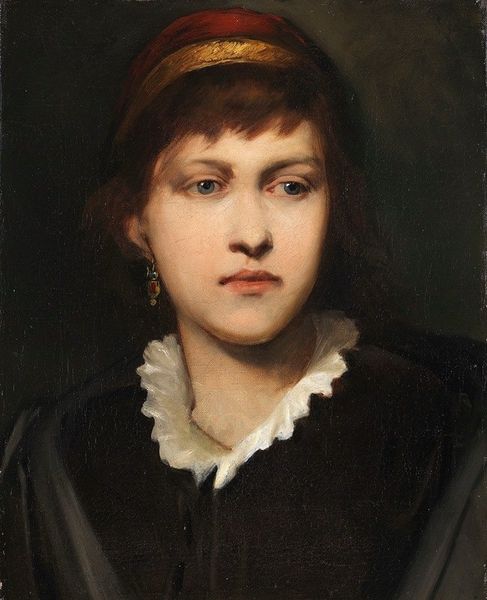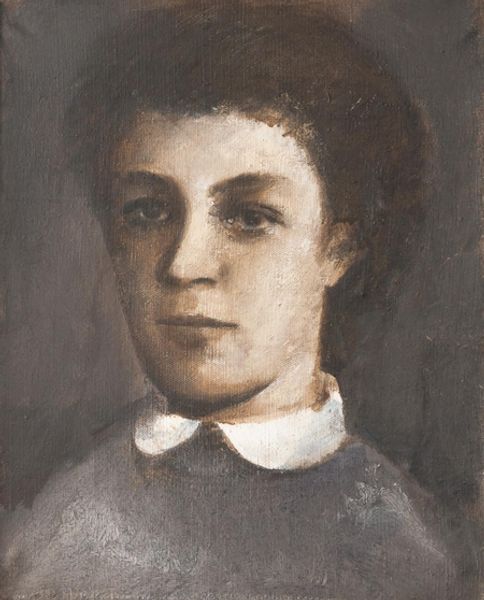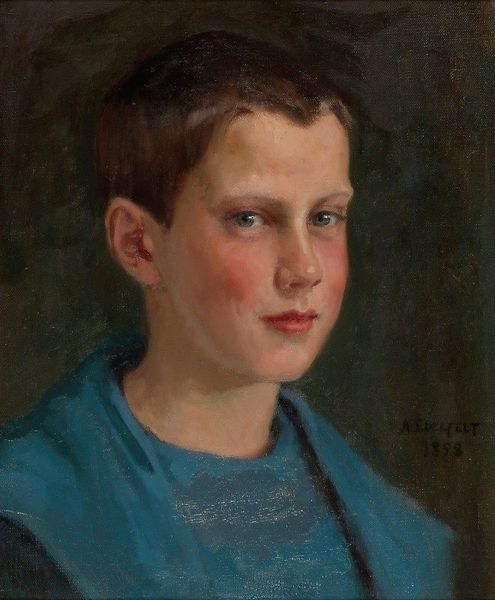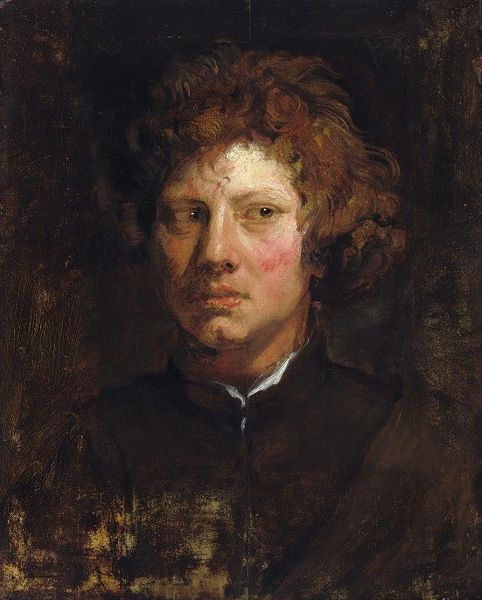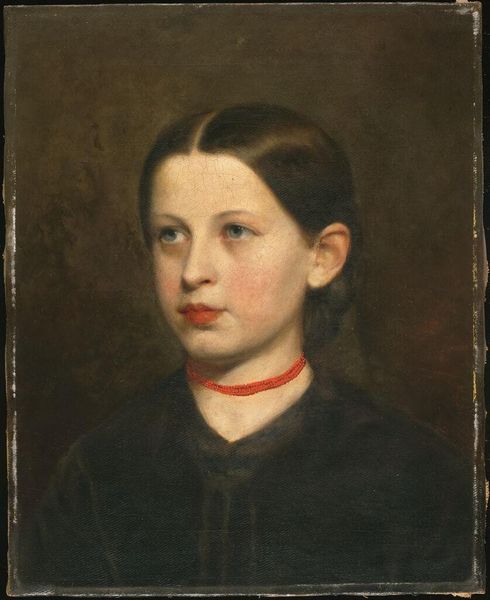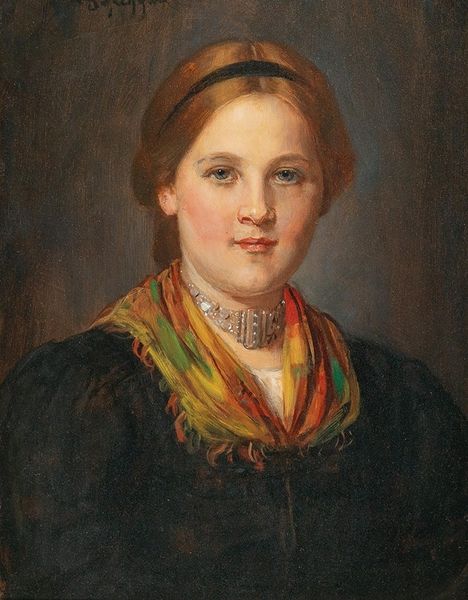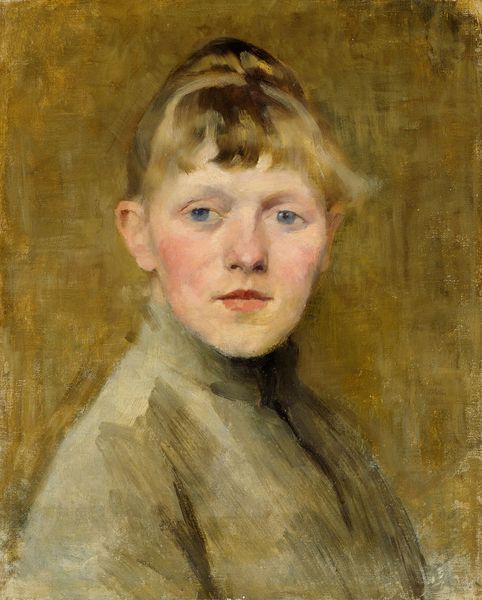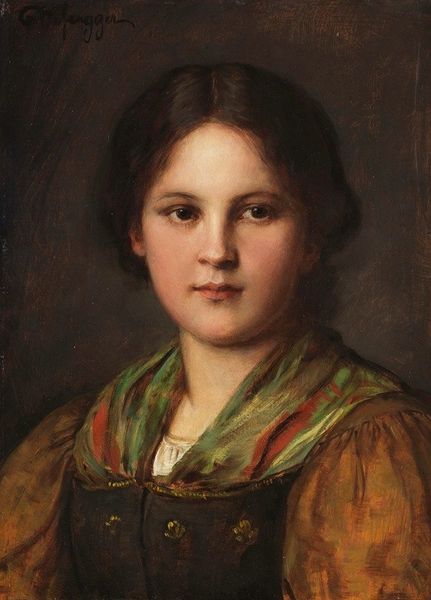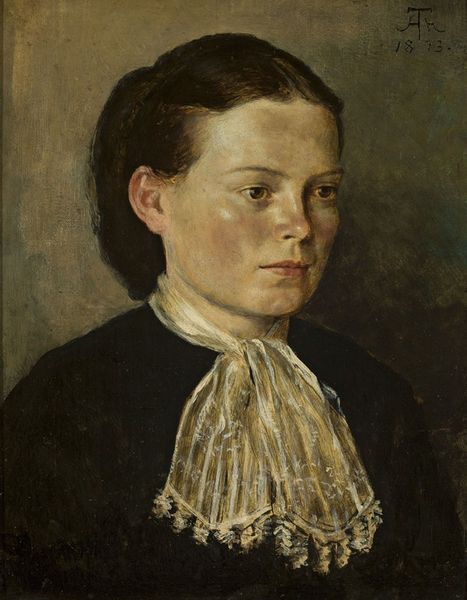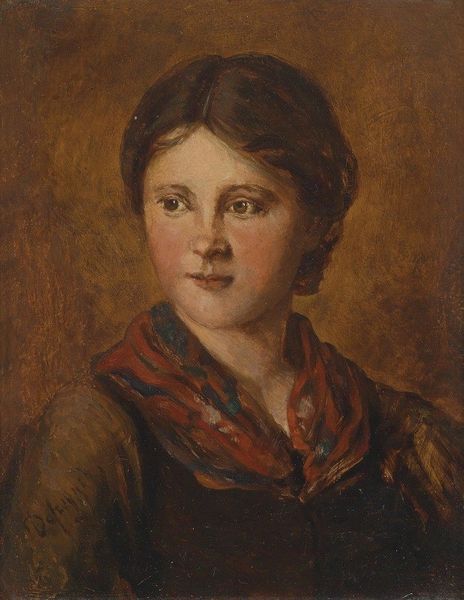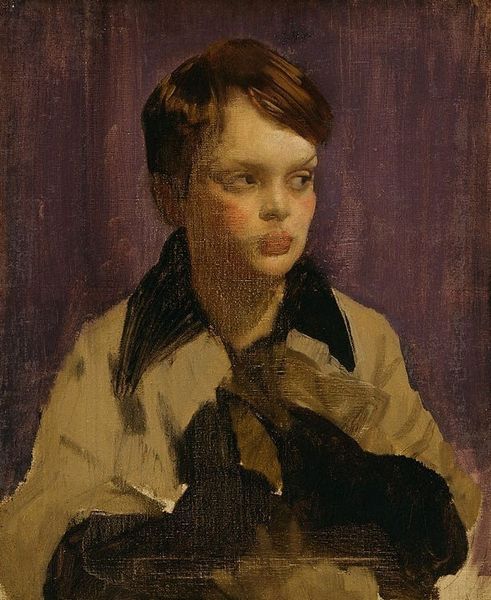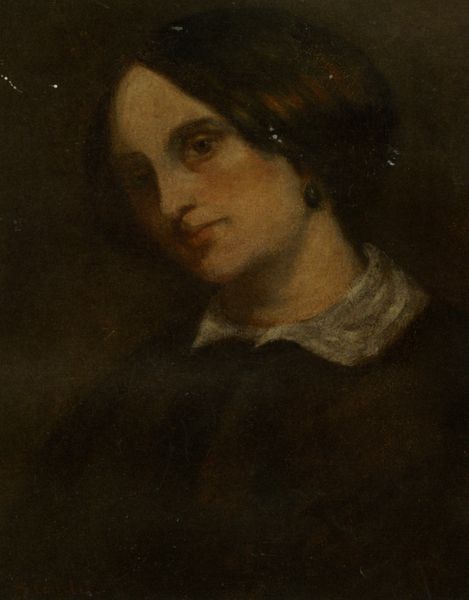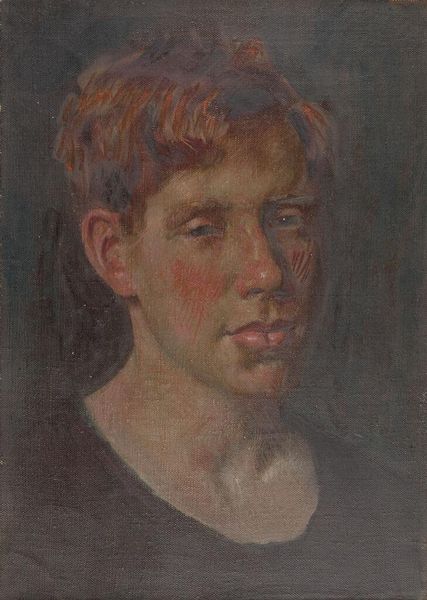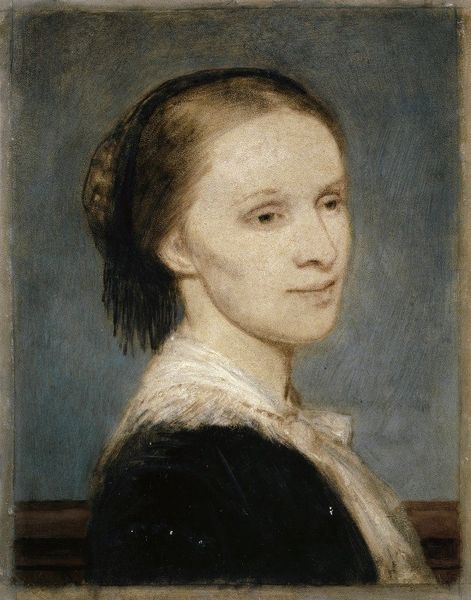
Copyright: Public Domain: Artvee
Editor: Here we have Franz von Lenbach's portrait of "Kronprinz Rudolf," painted in 1873 using oil paints. There’s something so contained and melancholic in his expression that I find striking. What do you see in this piece? Curator: It’s the symbolic weight carried in that melancholic expression that captures my attention. The pendant he wears, a potent symbol of authority and lineage, almost seems to be pressing down on him. Editor: Pressing down? In what way? Curator: The choice to portray a royal figure with such a visible vulnerability disrupts the expected iconography of power. It almost feels like Lenbach is foreshadowing the weight of responsibility and perhaps even the tragic fate that awaits him. Editor: You mean the Mayerling incident? So, even in 1873, the portrait anticipates that tragedy? Curator: Art often speaks to collective anxieties, premonitions carried within a culture. Look at the dark tonality, the shadow. The future is already looming over him. The cultural memory associated with the Habsburgs would bring so much expectation to the future emperor. He would always be bound to that destiny. Editor: So the portrait speaks as much about cultural expectation as it does about Rudolf himself? Curator: Precisely! We project so much into images; the artist is simply playing with what’s already there. Editor: That’s a really interesting way of thinking about portraits - they aren’t just capturing a likeness. Thank you for that insight. Curator: Indeed, and remembering the layers of meaning enriches our understanding. It shows that even in an individual image, we carry a legacy.
Comments
No comments
Be the first to comment and join the conversation on the ultimate creative platform.
